The results of Butterfly Conservation’s Big Butterfly Count are out! These results are based on the number of butterflies and day-flying moths spotted during 16th July – 8th August. Unfortunately this period doesn’t take into account Spring flying butterflies. If it had, I suspect the results would have been even more depressing. The focus is mainly on Summer butterflies and on the whole these show a worrying decline in numbers across the UK.
The overall number of butterflies recorded per count is at its lowest since the Big Butterfly Count began 12 years ago. It’s not all bad news and some butterflies, such as the Marbled White +213%; Ringlet +81%; Meadow Brown +33% – are all up on last year’s count. However, it must be recognised that the general trend is down and action to act now is vital if we are to save many of the UK’s butterflies and moths for future generations.
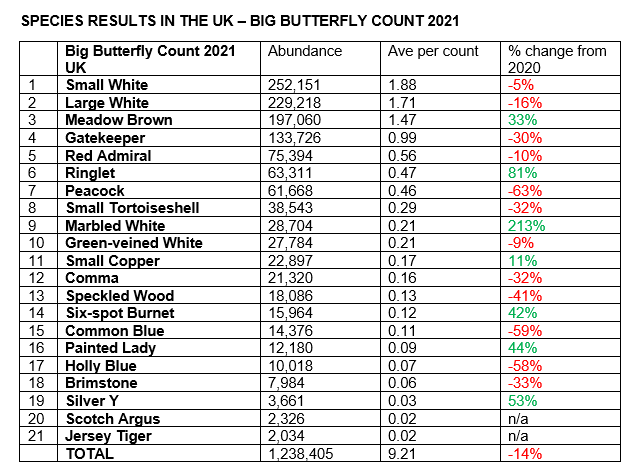
Some of the UK’s most-loved species including the Small Tortoiseshell and Peacock butterflies dropped in numbers this summer. The iconic Peacock butterfly suffered its lowest numbers since 2012. The Small Tortoiseshell, once a frequent visitor to gardens in the UK, had its third worst summer in the history of the Big Butterfly Count and shows a significant long-term decline in Britain.
CLICK HERE for Butterfly Conservation’s Big Butterfly Count 2021
In this article I’m going to give my own butterfly sightings for 2021 and see how they compare to Big Butterfly Count 2021. I should stress that these are my records based solely on photographic evidence and do not include sightings from my garden or from my daily walks in the park. They are based on a selection my own photographs captured from visits to local nature reserves in the Vale of Glamorgan and Mid Glamorgan areas of South Wales. My sightings were slow to kick-off with work commitments preventing visits to my local nature reserves during the Winter and early Spring months. Furthermore, my voluntary work for South & West Wales Wildlife Trust was also in limbo with work-parties not taking place since the lockdown in 2020.
My first visit to a nature reserve didn’t take place until June 1! Below is a list of butterflies and moths, with names of nature reserves and dates spotted:
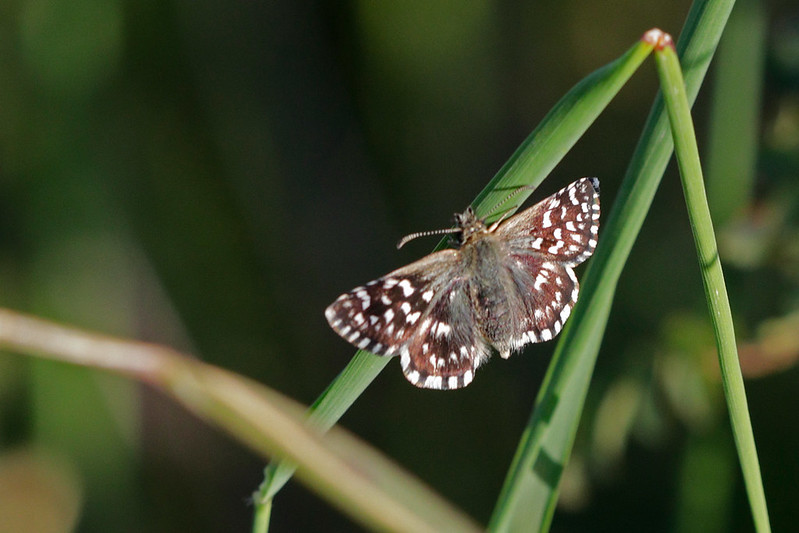
Grizzled Skipper – Pyrgus male
Canon EOS 80D – Sigma 150mm Macro – f/5.6 – 1/500 – ISO 400
Grizzled Skipper – Pyrgus male
Merthyr Mawr Warren – June 1, 2021
Grizzled Skippers emerge around mid April and by mid June have completed their life cycle. Unfortunately, they are long gone by the time The Big Butterfly Count starts collating its data of butterflies. However, the results of the UK Butterfly Monitoring Scheme showed worrying declines for many species, including the Grizzled Skipper, which had its worst ever year (down 54% since 1976). I’ve visited Merthyr Mawr yearly between May and June since 2016 and my own findings confirm the scarcity of Grizzled Skippers (see June Post – Return to Merthyr Mawr Part 3)
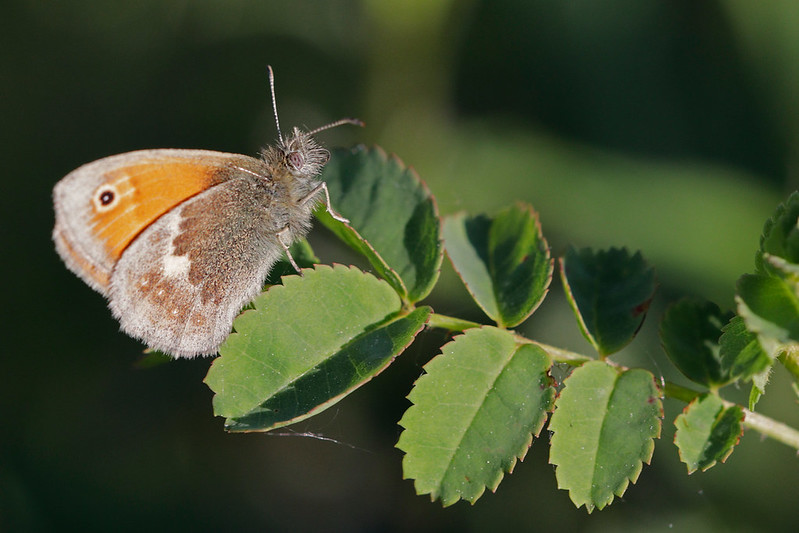
Small Heath – Coenonympha pamphilius
Canon EOS 80D – Sigma 150mm Macro – f/5.6 – 1/800 – ISO 400
Small Heath – Coenonympha pamphilius
Merthyr Mawr Warren – June 1, 2021
Not on the Big Butterfly Count 2021 list. I had no problem spotting these at Merthyr Mawr
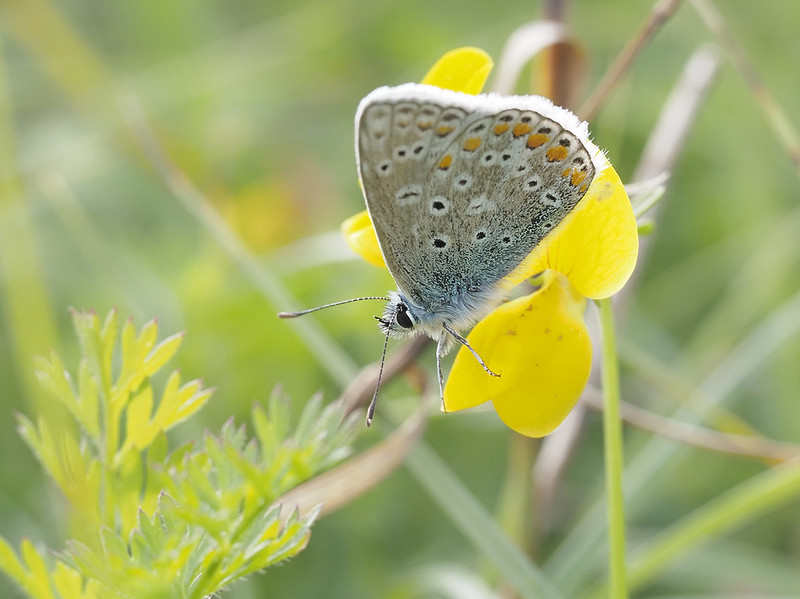
Common Blue – Polyommatus icarus
Olympus E-M1 Mark II – Olympus Zuiko 60mm Macro – f/5.6 – 1/160 – ISO 400
Common Blue – Polyommatus icarus
Merthyr Mawr Warren – June 1, June 16
Cosmeston Country Park – August 4, August 17
-59% A worrying decline so fortunate to have spotted this small dainty butterfly.
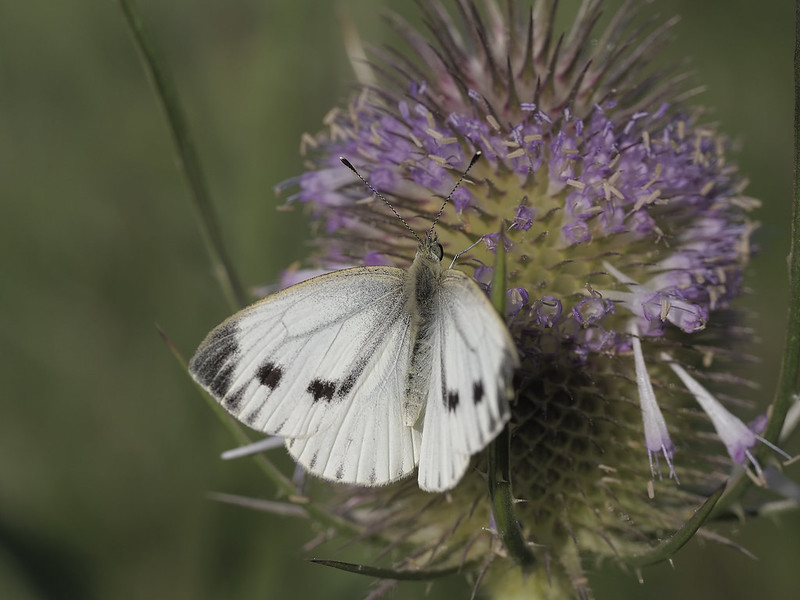
Small White – Piers rapae
Olympus E-M1 Mark II – Olympus Zuiko 60mm Macro – f/5.6 – 1/1000 – ISO 200
Small White – Piers rapae
Cosmeston Country Park – August 4
-5% Seen on various occasions, usually while taking the dogs out for a walk. However, didn’t seem as plentiful as on previous years.
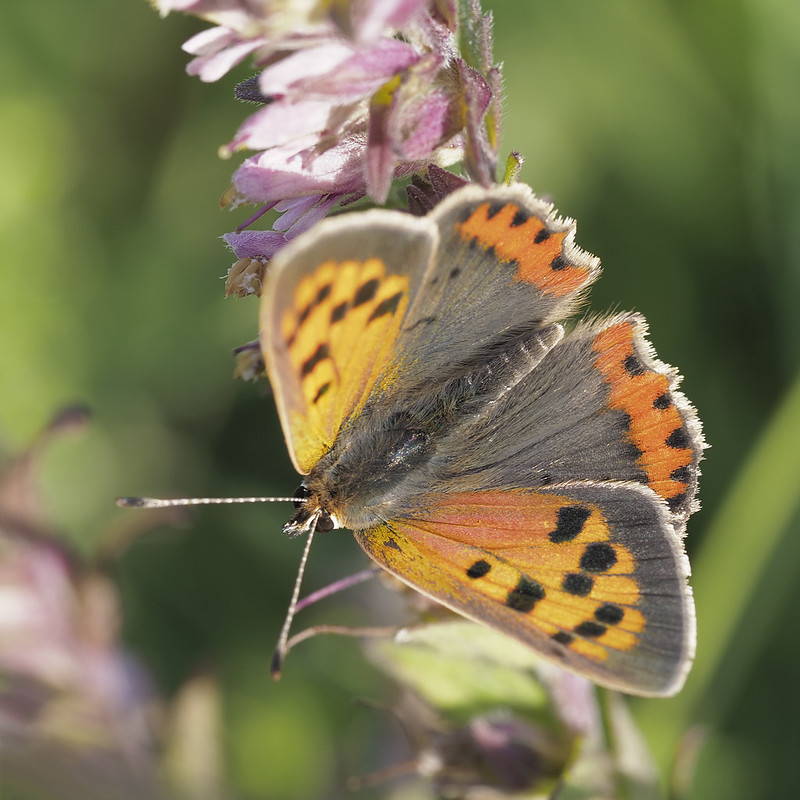
Small Copper – Lycaena phlaeas
Olympus E-M1 Mark II – Olympus Zuiko 60mm Macro – f/5.6 – 1/100 – ISO 200
Small Copper – Lycaena phlaeas
Cosmeston Country Park – August 4
+11% Challenging to photograph due to its small size and easily spooked nature. Pleased to see that its numbers are up from last year.
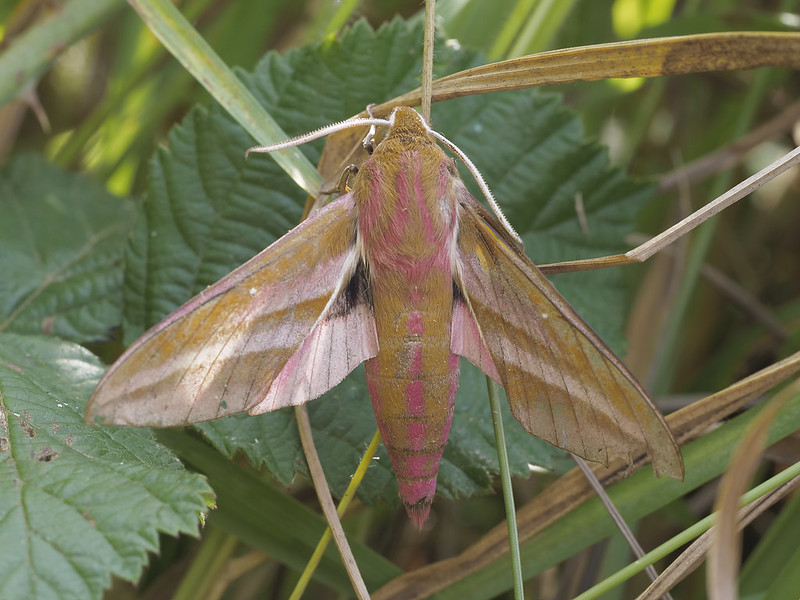
Elephant Hawk Moth – Deilephila elpenor
Olympus E-M1 Mark II – Olympus Zuiko 60mm Macro – f/8.0 – 1/25 – ISO 200
Elephant Hawk Moth – Deilephila elpenor
Cosmeston Country Park – August 4
First time I’ve actually managed to photograph this stunning hawk moth.
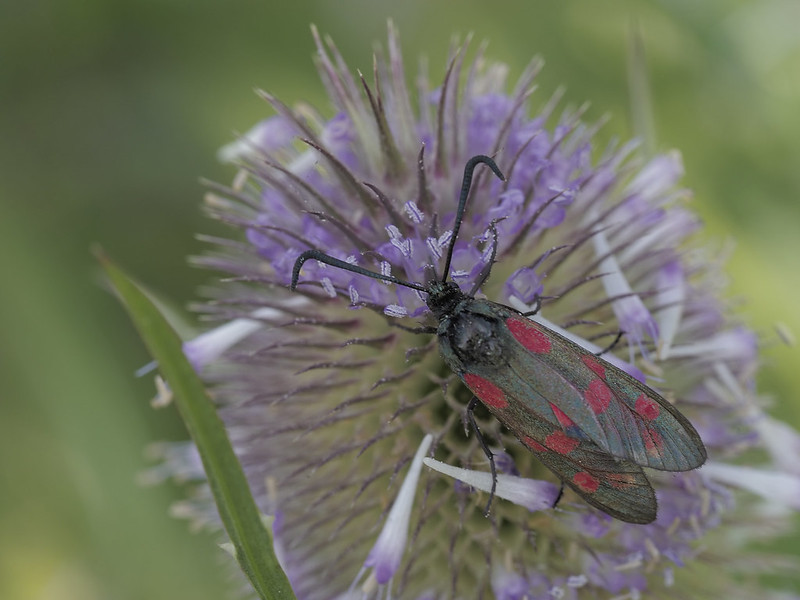
Six-Spot – Zygaena filipendulae
Olympus E-M1 Mark II – Olympus Zuiko 60mm Macro – f/5.6 – 1/100 – ISO 200
Six-Spot Burnet Moth – Zygaena filipendulae
Cosmeston Country Park – August 4
+42% – Had no problem finding plenty – usually resting and feeding on Teasel
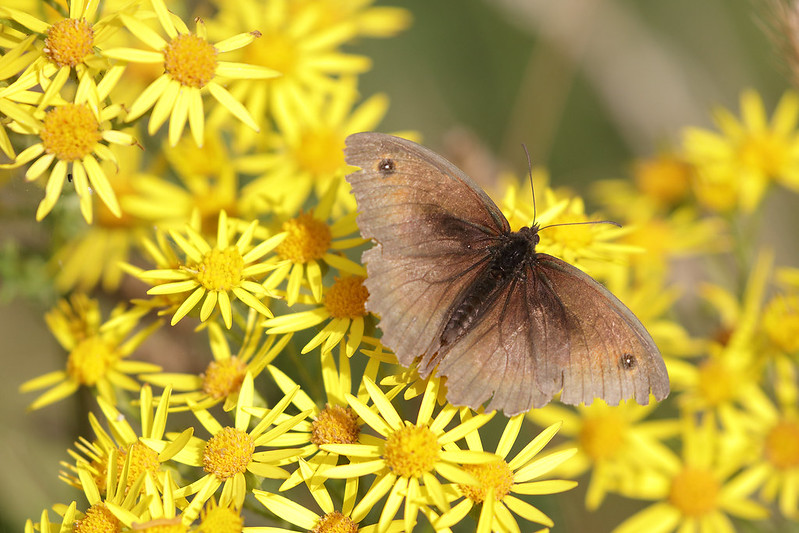
Meadow Brown – Maniola justina
Canon EOS 80D – Canon EF100-400mm IS II USM Mark II – f/6.3 – 1/1250 – 400mm – ISO 400
Meadow Brown – Maniola justina
Cosmeston Country Park – August 4
+33% – Baffling to explain why Meadow Browns are up by 33% and in contrast Gatekeepers are down by 30%
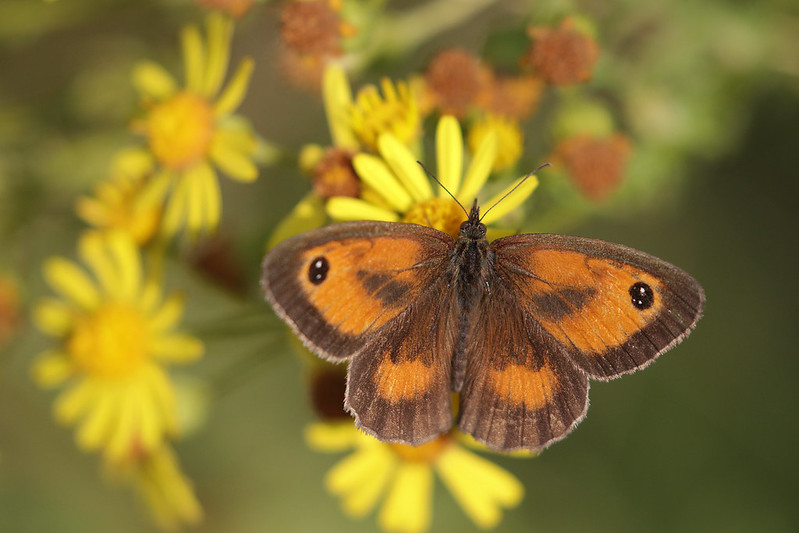
Gatekeeper – Pyronia tithonus
Canon EOS 80D – Canon EF100-400mm IS II USM Mark II – f/5.6 – 1/2000 – 400mm – ISO 400
Gatekeeper – Pyronia tithonus
Cosmeston Country Park – August 4, August 17, August 27
-30% – I’m surprised numbers are down as they seemed to be plentiful in Cosmeston Park
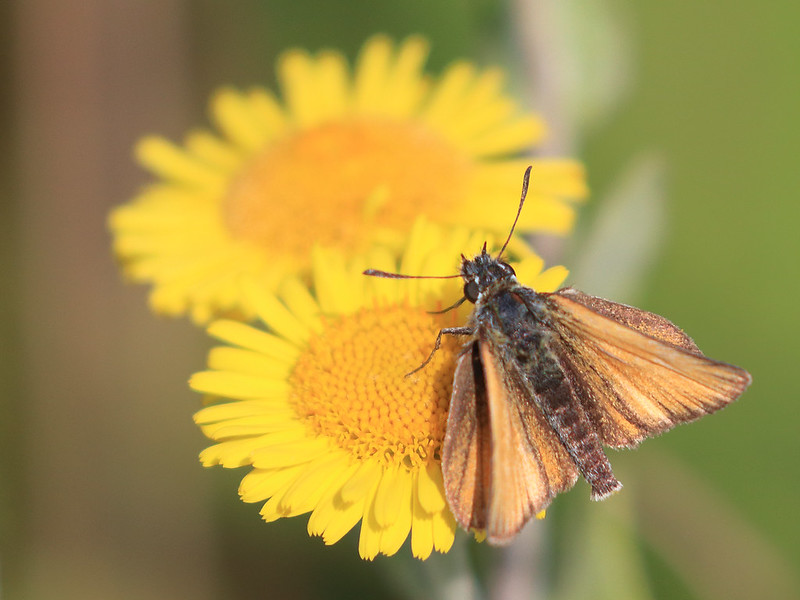
Small Skipper – Thymelicus sylvestnis
Canon EOS 80D – Canon EF100-400mm IS II USM Mark II – f/5.6 – 1/3200 – 400mm – ISO 400
Small Skipper – Thymelicus sylvestnis
Cosmeston Country Park – August 4
Flight period too early to be on list – Not seen as many as on previous years.
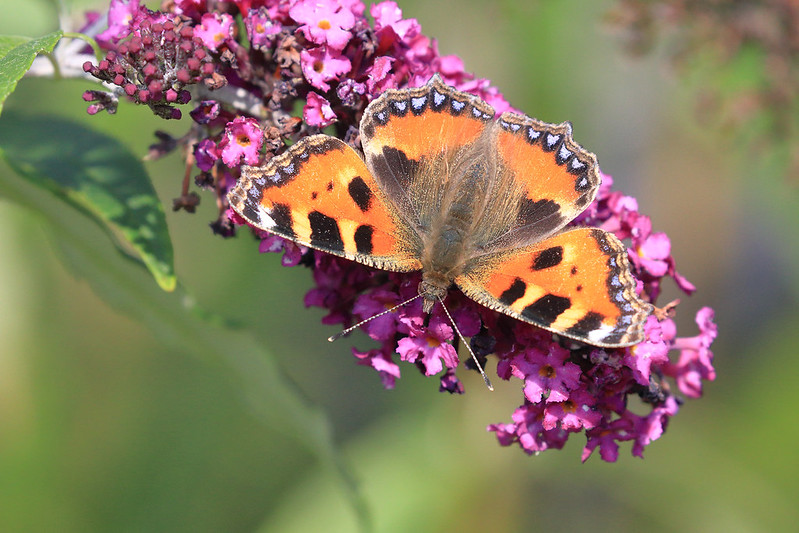
Small Tortoiseshell – Aglais urticae
Canon EOS 80D – Canon EF100-400mm IS II USM Mark II – f/8.0 – 1/1600 – 300mm – ISO 400
Small Tortoiseshell – Aglais urticae
Callingtom, Cornwall – August 23
-32% – Worrying decline although I suspect this beautiful butterfly may be more plentiful in Cornwall than in other areas. While on holiday in Cornwall I spotted many while back home in Wales I’ve struggled to find one!
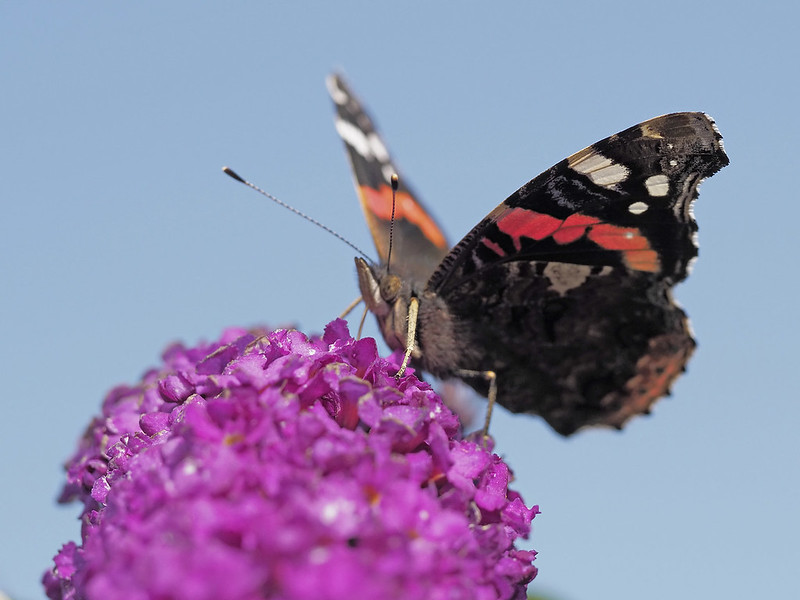
Red Admiral – Vanessa atalanta
Olympus E-M1 Mark II – Olympus Zuiko 60mm Macro – f/4.0 – 1/1000 -ISO 200
Red Admiral – Vanessa atalanta
Callingtom, Cornwall – August 23
Kenfig Nature Reserve – August 27
-10% – I’ve always found the Red Admiral particularly common in the Autumn when it can commonly be seen feeding on holly bushes. In Autumn, many also fly over from the continent – so I suspect its numbers are better after the 8th August (deadline for Big Butterfly Countown).
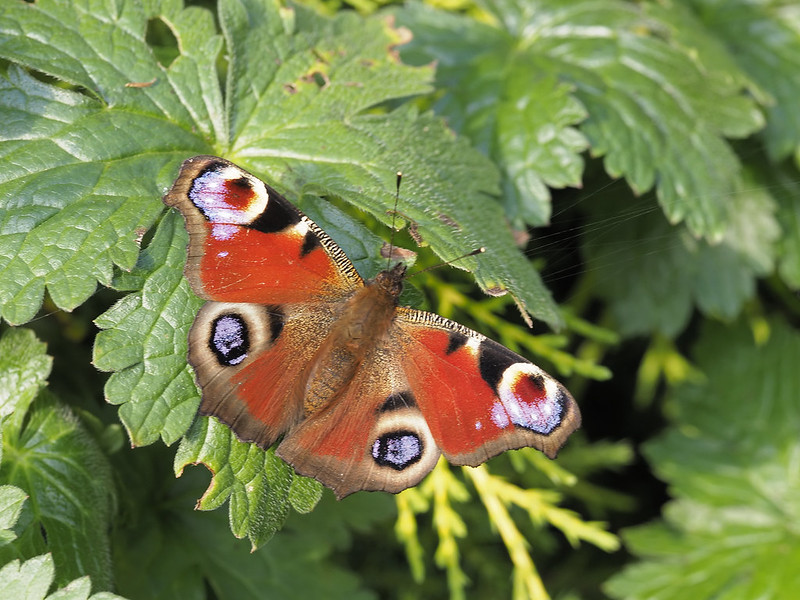
Peacock – Aglais io
Olympus E-M1 Mark II – Olympus Zuiko 60mm Macro – f/5.6 – 1/50 -ISO 200
Peacock – Aglais io
Landuleh, Cornwall – August 23
-63% – Very worrying decline. In previous years often seen on hedgerow verges running along Cosmeson Park. Sadly not seen in Cosmeston this year.
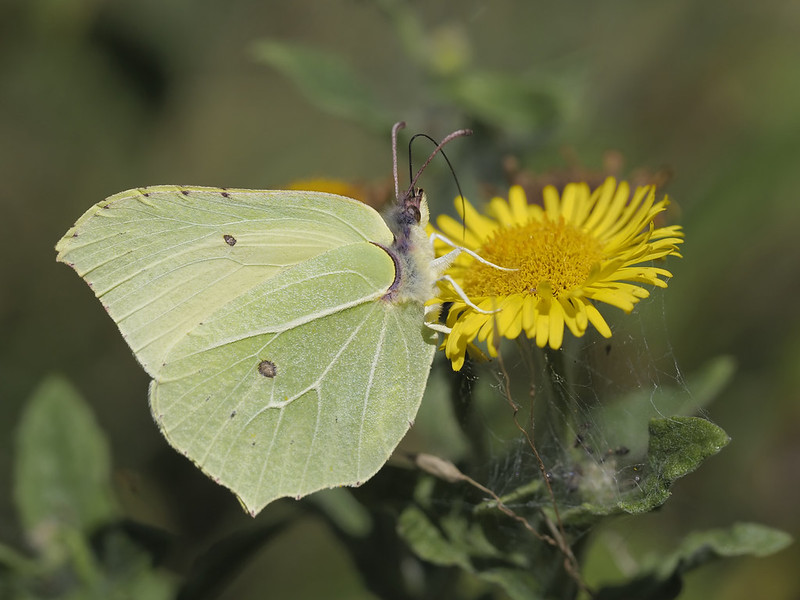
Brimstone – Gonepteryx rhombi
Olympus E-M1 Mark II – Olympus Zuiko 60mm Macro – f/4.0 – 1/2000 -ISO 200
Brimstone – Gonepteryx rhamni
Kenfig Nature Reserve – August 27
-33% – Can be found anywhere from early spring to late summer but population may have declined due to the destruction of hedgerows.
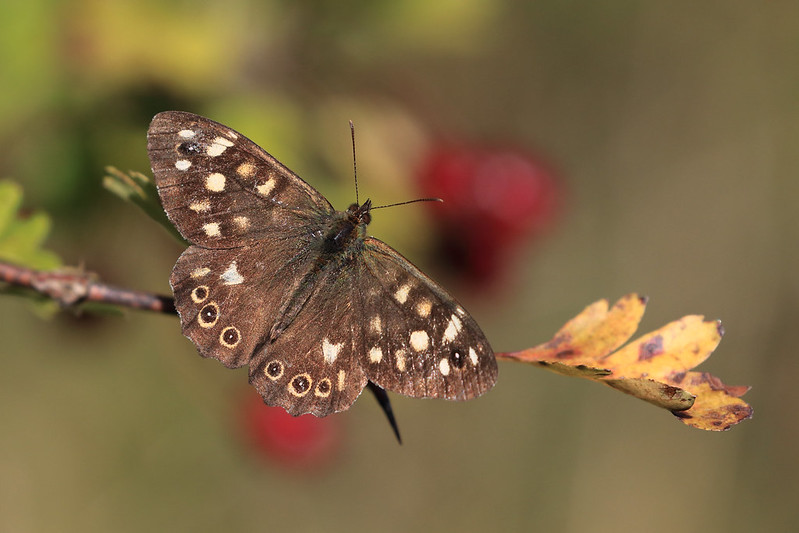
Speckled Wood – Pararge aegeria
Canon EOS 80D – Canon EF100-400mm IS II USM Mark II – f/7.1 – 1/2000 – 400mm – ISO 400
Speckled Wood – Pararge aegeria
Kenfig Nature Reserve – August 27
Cosmeston Country Park – September 8
-41% – Like Red Admiral, most abundant in late August. Numbers more likely to be better after the 8th August (deadline for Big Butterfly Countown).
It’s not helpful at this stage to make any definite conclusions from the data – I’ll leave that to the far more knowledgable people at Butterfly Conservation. There is much baffling data. On the positive end of the scale we have the Marbled White at +213%; while at the negative end we have the Peacock at -63%. This goes against my own experience of always (at least as far as I can remember) having seen more Peacocks than Marbled Whites. This is not surprising bearing in mind that Marbled Whites are far scarcer in Wales than in England. What would therefore be most useful is a geographical breakup of the data. I’m sure that Butterfly Conservation in due course will produce distribution maps and I look forward to getting my hands on their forthcoming Atlas of Butterflies in Britain & Ireland.
The decline in butterflies and moths is indicative of the sad state of wildlife in general and is a sobering reminder of the vulnerability and inter-connectedness of all life. The data is bad but it could be so much worse when one considers the brutal killing of animals and particularly insects through indiscriminate use of insecticides and habitat destruction. When you consider all the damage caused by humans to the environment its no small wonder that many species of butterfly have survived at all! Humans are mainly responsible for species decline and the survival of much wildlife depends on our actions. To this end Butterfly Conservation has just unveiled an ambitious new strategy to combat the declines to butterfly and moth numbers that we’ve seen in the results of the Big Butterfly Count 2021. You can find out more about it HERE.

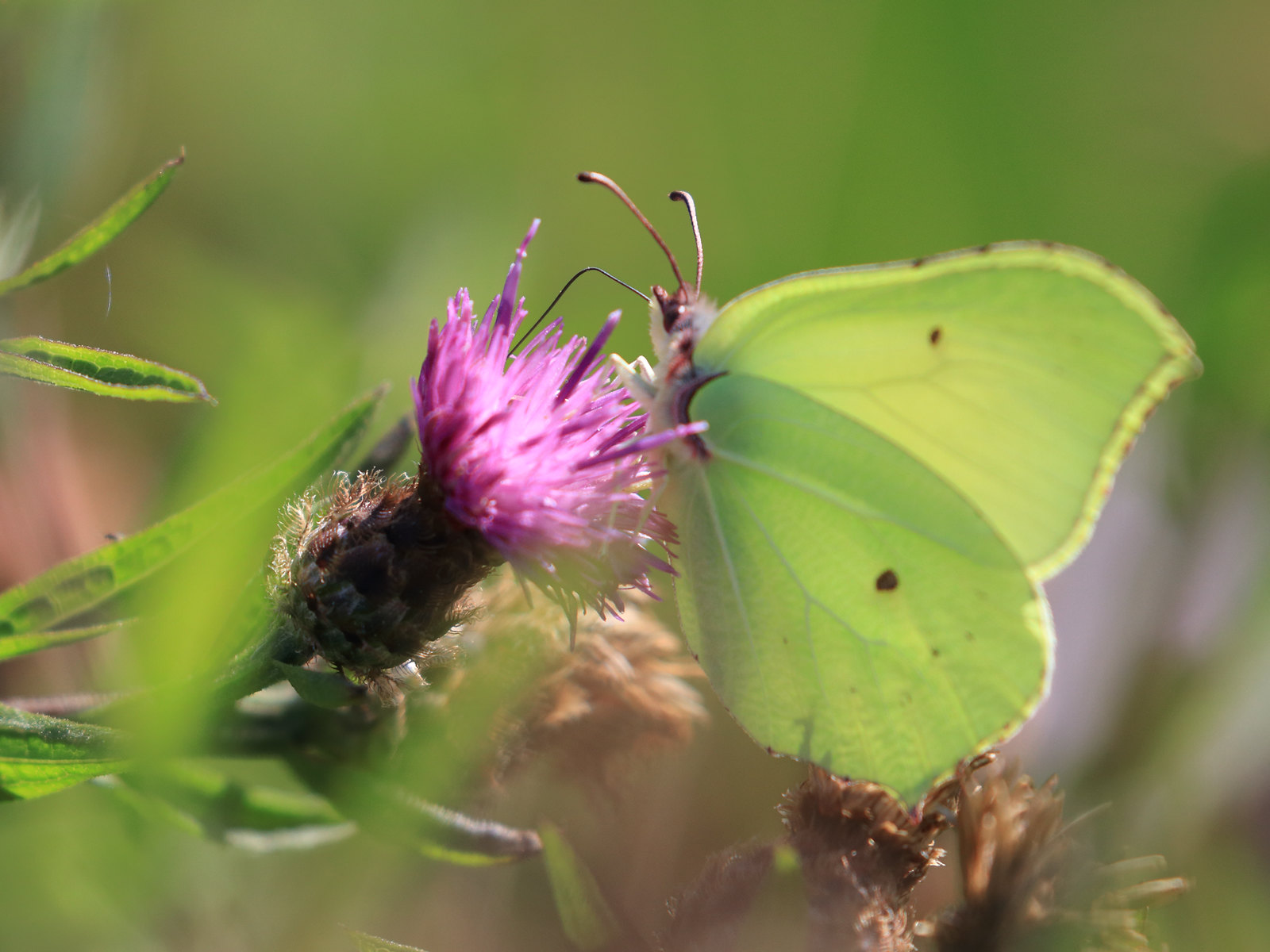
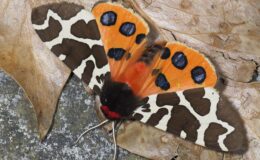

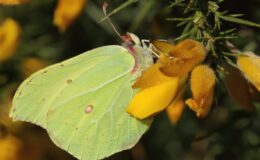
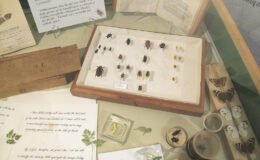
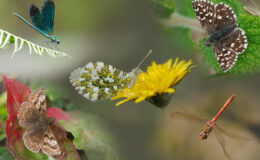
Leave a Comment